How do we solve the problem of marine litter?
Also, download this story from the electronic issue here
Marine litter, a growing political issue deliberated recently during the G7 global forum of policy makers and economic leaders, is also a moral issue that needs to be addressed from its source, says Angelica Buan in this report.
G7 pinpoints waste management
On June 7 and 8, the Group of 7 (G7) convened at Schloss Elmau, Germany, to discuss economic agenda, and address a number of critical global issues, including climate change and the environment.
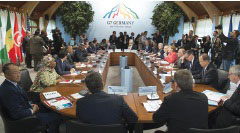
The G7, comprising economic leaders from Canada, France, Germany, Italy, Japan, the UK, and the US, with the addition of the European Union (EU), concluded its two-day summit with a declaration that plots out action plans for identified key issues under global economy, foreign policy and development as well as climate change, energy, and environment.
Under environment, the G7 outlined its commitment to combat marine litter, “from land-based and marine sources, address debris removal, and focus on education, research and outreach,” according to a press release from the US Press Secretary.
Further, the press release cited that waste management activities will be fused into the international development assistance. Support will also be given towards implementing pilot projects to reduce waste entering water streams; and for developing sustainable packaging, and promoting best practices across the plastics manufacturing value chain.
Growing global concern
Marine litter is a global concern according to the European Commission (EC) and the United Nations Environment Programme (UNEP). The scale of the problem is escalating day by the day, with millions of tonnes of garbage ending up in the oceans. As a consequence of inadequate waste management infrastructure, waste plastics, especially those types which break into tiny pieces, contribute significantly to the marine litter woes.
Since negligent human activities also play a vital role in this issue, human interference through individual projects and collective campaigns, also figure in the overall solution.
Thus, highlighting this issue at the G7 summit is considered by environmentalists as a monumental move to influence national policies on the environment, and to broaden public awareness.
Meanwhile, amongst the active groups crafting solutions for marine litter, is the World Plastics Council (WPC), an organisation of 50 top executives from plastic resin producers across the globe formed in 2013, and initiated by Germany-headquartered PlasticsEurope and the plastics division of the American Chemistry Council (ACC). It has launched the Operation Clean Sweep programme, which involves the industry’s value chain.
The programme takes credit for the reduction of loss of plastic pellets, according to WPC. The group says that it decries the scenario of waste plastics infiltrating the marine environments.
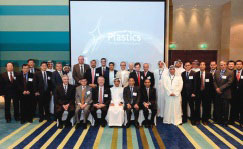
PlasticsEurope also upholds initiatives focusing on the marine litter solution, such as the “Zero Plastics to Landfill by 2020,” to name but a few.
Cleaning up plastics in the ocean
Already, various solutions are being offered, with new innovations being developed and introduced to curb marine litter.
One of these is a 2,000-m floating structure, claimed to be the longest of its kind in the world. It can passively clean up plastics pollution from the world’s ocean, and is expected to be deployed by the second quarter of 2016, according to Boyan Slat, the 20-year old founder and CEO of Ocean Cleanup.
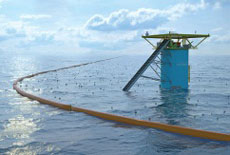
Founded in 2013, Ocean Cleanup develops technologies to extract, prevent, and intercept plastic pollution via long floating barriers to let the ocean currents concentrate on the plastic waste itself. It reports a 2014 feasibility study confirming that the passive system is a cost-effective method to remove half the Great Pacific Garbage Patch in ten years’ time.
The Great Pacific Garbage Patch is a collection of marine debris in the North Pacific Ocean. Marine debris is litter that ends up in oceans, seas, and other large bodies of water. The Great Pacific Garbage Patch, also known as the Pacific trash vortex, spans waters from the West Coast of North America to Japan. The patch is actually comprised of the Western Garbage Patch, located near Japan, and the Eastern Garbage Patch, located between the US states of Hawaii and California.
In lieu of its project timeline, the feasibility of deployment of the array off the coast of Tsushima, an island located in the waters between Japan and South Korea is currently being researched.
The array will be operational for at least two years, retrieving plastic pollution before it reaches the shores of the proposed deployment location of Tsushima Island. The latter is evaluating whether the plastic can be used as an alternative energy source.
The scale of the plastic pollution problem, whereby in the case of Tsushima Island being 1cu m of pollution/person washed up each year, has led the Japanese local government to seek innovative solutions to the problem.
The deployment will represent an important milestone in Ocean Cleanup’s mission to remove plastic pollution from the world’s oceans, according to the group. Within five years, after a series of deployments of increasing scale, Ocean Cleanup plans to deploy a 100 km-long system to clean up about half the Great Pacific Garbage Patch, between Hawaii and California.
Up against the tide of litter
A group of UK surfers is not only challenging the waves but also the tonnes of litter that are now proliferating the seas.
The West country-based environmental charity group, Surfers Against Sewage (SAS), has embarked on a goal of reducing by half the amount of litter found on their beaches and surfing habitats by 2020.
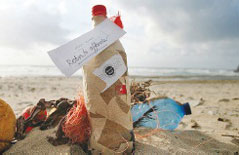
For 25 years now, SAS has been involved in marine conservation issues. It has launched several initiatives including the “Return to Offender”, which is sending back the branded litter item to the manufacturer to raise the issue of more sustainable packaging options and taking accountability of educating their consumers of proper item disposal.
It has also launched a campaign called, “Pledge to Prevent Resin Pellet Loss”, which prompts plastics manufacturers to enable responsible handling mechanisms for plastic pellets (also known as mermaid’s tears in the marine environment) and prevent these from entering the waterways.
Its round-up of activities also include training and mobilising 10,000 to 15,000 coastal volunteers; and demanding for restrictions on the sewage discharges from the UK’s network of over 30,000 combined sewer overflows, to cite a few.
Scouring the seas for more solutions
Amongst the number of initiatives undertaken to study further the debacle of ocean debris is the eXXpedition, an all-women series of voyages. The team’s mission is to explore the issue of chemicals, endocrine disrupters and carcinogens in the personal and global environment that can cause disease, in particular raising awareness of those linked to the rise in breast cancer rates.
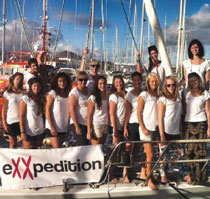
The first voyage, which took the 14-women crew across the Atlantic, was in mid-November last year. The female researchers are tasked to collect environmental debris samples, such as plastics and other pollutants, feeding in these samples to wider studies investigating the impacts of toxics and plastics pollutants and linking this sampling to narratives of ecosystem health, personal health and the products consumed.
For the second voyage, the eXXpedition team is sailing to one of the five ocean gyres where there is a heavy concentration of debris, a voyage from the Ivory Coast to Brazil via Ascension Island on a 22-m boat.
Up to this day, teams of experts continue to measure and evaluate the extent of the marine litter problem, basically its causes and ef fects to the environment and human safety, with more assistance and launching of more programmes and policies expected in the future.
(PRA)Copyright (c) 2015 www.plasticsandrubberasia.com. All rights reserved.









































